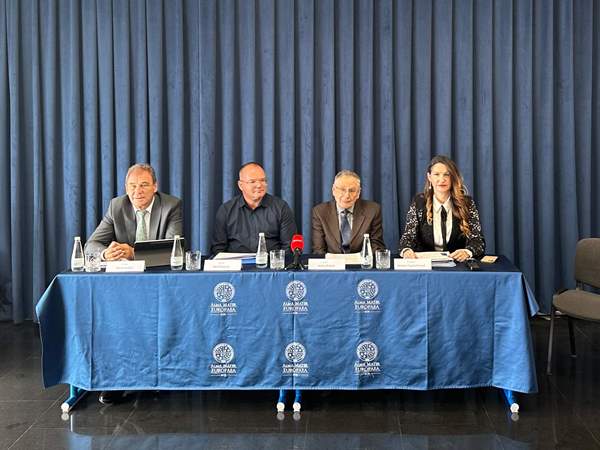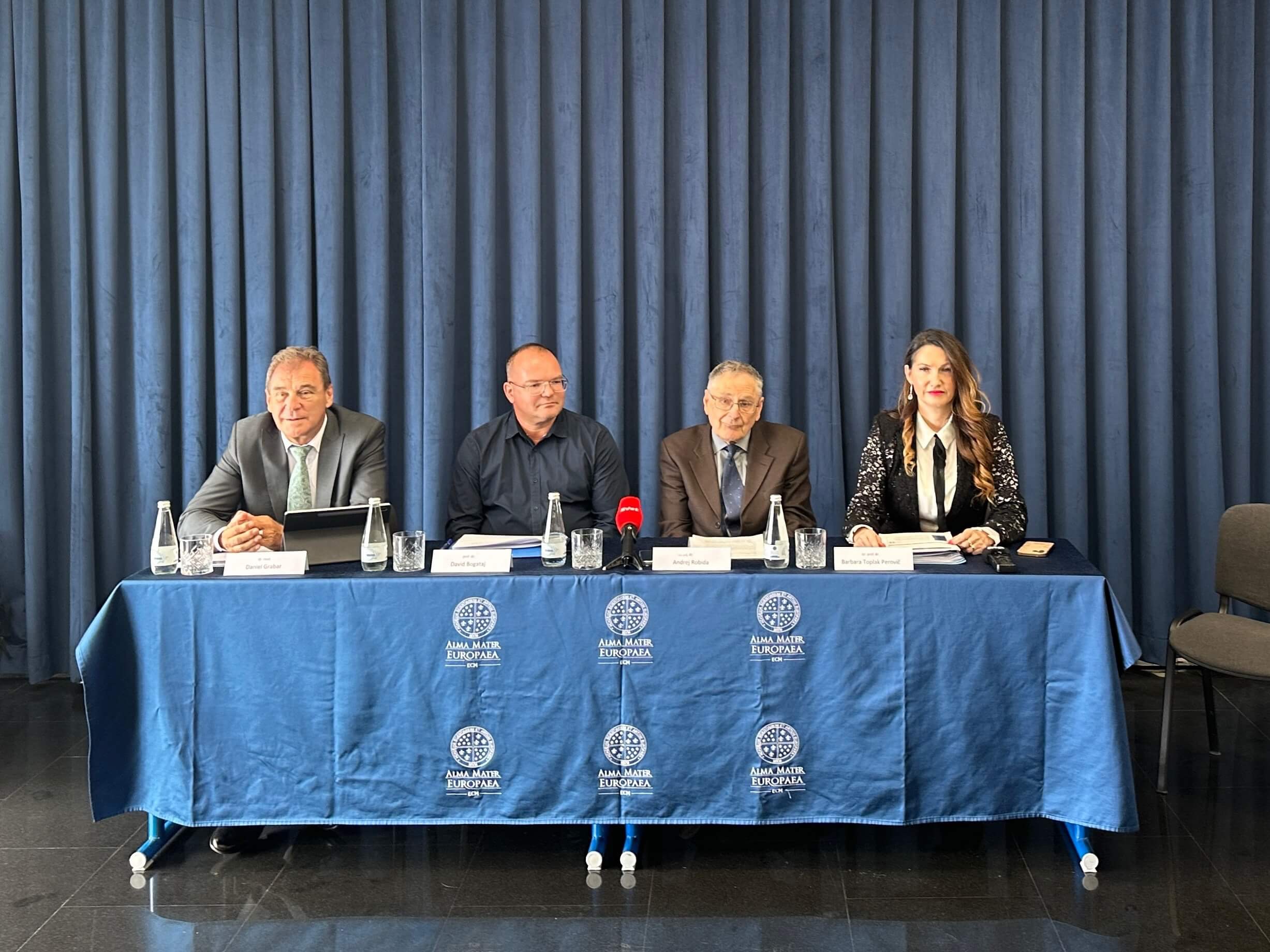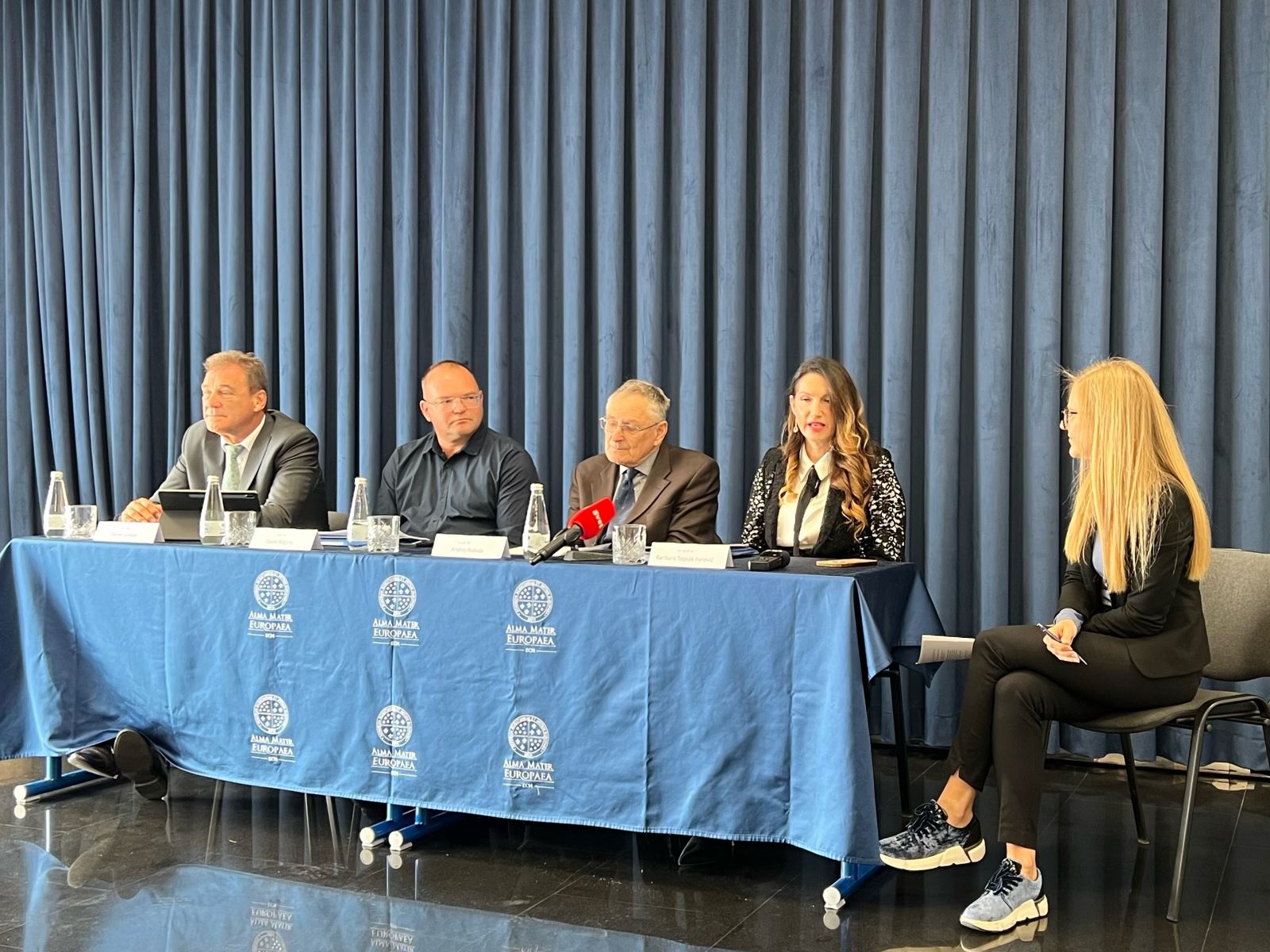
Presentation of Research Findings: Patient Safety Culture

The Alma Mater Europaea University research team in Ljubljana presented a 200-page study on measuring patient safety culture based on research conducted in primary healthcare, hospitals, pharmacies, and social care institutions.
The main objective was to assess the existing safety culture and, based on the findings, provide recommendations to regulators for improving the situation. In high-income countries, it is estimated that one in ten patients is harmed during hospital care. Adverse events that can cause harm are preventable in nearly 50% of cases. The project measured the patient safety culture in Slovenia across different institutions and healthcare providers, offering recommendations to regulators for establishing a quality system in healthcare.
The alarming statistics underscore the urgent need to improve patient safety. We call on all stakeholders in the healthcare system to focus on improving patient safety and reducing the number of harmful events and urge regulators to take appropriate action. We can ensure a safer healthcare environment through the joint efforts of all patients.
RESEARCH TEAM:
Professor Dr. Barbara Toplak Perovič, Alma Mater Europaea University
Dr. Andrej Robida, MD, Pediatrician and Public Health Specialist
Professor Dr. David Bogataj, Alma Mater Europaea University
Dr. Daniel Grabar, MD, General Hospital Murska Sobota
.jpg)
Project: Perception of Patient Safety Culture
Project Number: V3-2245 – Patient Safety Culture
Executor: Alma Mater Europaea University and General Hospital Murska Sobota
Project Purpose and Goals:
The project aims to develop a standardized questionnaire for measuring the perception of safety culture in healthcare.
Measure the perception of safety culture in a sample of hospitals, primary healthcare centers (primary level), community pharmacies, and social care institutions.
Propose possible improvements for quality and safety management at the national level.
Suggest measures at all levels of healthcare service providers.
Added Value of the Project:
The foundation for introducing systemic monitoring of safety culture enables the identification of areas where measures need to be implemented to improve patient safety.
Implementing a recognized and professionally developed questionnaire with accompanying methodology ensures greater reliability. The intention is that the questionnaire will not need to be radically changed in the short term due to inadequacy. This fact allows for the potential monitoring of changes in safety culture over a longer time horizon.
Developing a national questionnaire prevents duplication of work among hospitals and allows for comparability between different levels and healthcare organizations.
Measuring and monitoring safety culture raises healthcare workers' awareness of the importance of patient safety, leading to greater patient safety.
Project Funding:
The Ministry of Health and ARIS co-financed the project as part of project V3-2245, Patient Safety Culture.

HOSPITALS:
One in three healthcare workers did not report any errors they noticed to their management in the past year.
Healthcare workers emphasize that hospital management should regularly pay more attention to patient safety, not just when preventable harmful events occur.
Healthcare workers believe there is insufficient staff in all hospital profiles to handle the workload.
The vast majority also believe that the number of overtime hours needs to be reduced.
Healthcare workers' responses indicate that the pace of hospital unit work should be slowed down, as it negatively affects patient safety.
PRIMARY HEALTHCARE:
Primary care healthcare workers believe that the staffing structure in their work environment is insufficient to handle the number of patients, and communication disruptions, leading to delays in patient care, are common.
The research shows that staff fatigue needs to be reduced as it worsens work performance, which is especially critical in emergencies such as cardiac arrest.
Staff in healthcare institutions find it difficult to speak up about perceived issues in patient care.
PHARMACIES:
Despite encouraging results from the survey among pharmacy workers, staff shortages are also noticeable in pharmacies, primarily manifesting as time pressure in dispensing prescriptions.
SOCIAL CARE INSTITUTIONS:
Most caregivers believe that patient safety in social care institutions is good. Only 3% of respondents consider safety to be poor.
The research findings show that most caregivers in social care institutions have difficulty discussing observed problems and errors in patient care.
One in three is unaware that excessive workload affects patient safety, although more than half agree that fatigue worsens their work performance.
RECOMMENDATIONS
To improve patient safety, it is crucial to introduce mandatory regular measurement of the perception of safety culture throughout the healthcare system, establish a comprehensive safety system, and provide practical training for all staff. Improvements must be systematic and based on accurate research data, not merely regulatory requirements.
